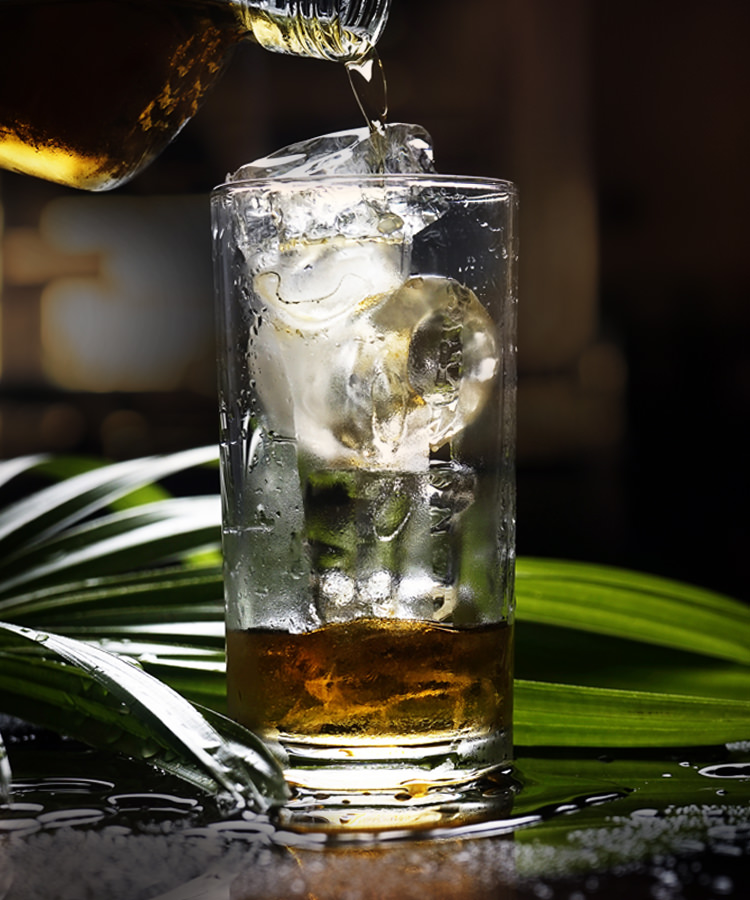A choreographed symphony of wrist flicks and swirls, Japanese bartending is an art form. Ingredients are meticulously sourced, drinks are stirred just so, and ice cubes are perfectly square-cut (and, as testament to a national pursuit of perfection, are also sold by the bag at 7-Elevens across the country).
Fittingly, the Japanese highball is an exercise in precision. Commonly fashioned from a blend of whiskey and sparkling water, and served over ice, the two-ingredient drink is deceptively complex. Proper execution requires expertise.
These days, American bartenders are falling for the simplicity and versatility of this technique-driven libation. Several beverage professionals wonder if the proliferation of Japanese highballs in American bars is a counterbalance to the crazy infusions and 50-ingredient drinks we’ve been sipping for the past decade.
“I think the era of creative ‘farm-to-glass’ mixology is passing, and cocktailing as an art is taking hold again,” comments Fred Ghiassi, beverage director and assistant general manager of Estrella, a seasonal restaurant in Los Angeles. This summer, Estrella debuted the Highball-er, an ice-cold blend of Hakushu 12 and housemade lemon zest soda.
According to Ghiassi, the deceptively complex drink requires, “a melody between the right spirit, the perfect carbonation, and temperature.”
Kenta Goto, proprietor of New York’s Japanese cocktail den Bar Goto, introduced a highball cocktail last spring.
The highball is “like an omelet in French cooking – it’s simple, but classic, and needs to be executed right,” explains Goto. Like Ghiassi, he contends that to make a proper highball, one must consider such factors as “[t]he carbonation in the soda, the proof of the whiskey, and temperature.”
“Typically, in Japan, we drink while we eat,” Goto adds. “A whiskey highball goes well with pretty much everything from tofu to fried food.” His version, the Shinshu Highball, involves two whiskies, Iwai Mars and Bowmore, plus club soda.
Michael Huebner, bar manager at Chicago’s Revival Café-Bar, believes that the beauty of a highball lies in its “simplicity and the attention to detail of the bartender.” He feels that the cocktail is “really more of a technique and practice.”
Revival introduced its Kodawari cocktail earlier this month. It combines Suntory Toki, stirred a specific number of times, with a large ice cube in a Collins glass. The whisky is topped with Topo Chico sparkling water, stirred again, and garnished with a lemon peel.
San Diego-based bar manager Frank McGrath teamed up with Beam Suntory, the parent company of several world-renowned Japanese whisky brands, to debut a Toki Highball at Polite Provisions in February.
“This beverage is almost like having a refreshing beer on a hot day,” says McGrath of the Toki Highball’s appeal in sunny California. “It is only one and a half ounces of beautiful Japanese whiskey, topped with Mineragua, which is a soda water that has some minerals added to enhance flavor and is extremely fizzy for mouthfeel. We wanted to honor the Japanese tradition, as they have mastered something so simple.”
“It’s simple to make, allows for a lot of options, and seems to be the antidote to all these complex craft cocktails we’ve been inundated with lately,” adds Gaby Mlynarczyk of Los Angeles’ Accomplice Bar. She recently introduced a gin-based highball flavored with elderflower and lemon to the menu.
Meanwhile, Honolulu’s Bar Leather Apron pours a Pomegranate Highball made with Kikori whiskey, pomegranate, cinnamon, and soda. Last month, New York City sushi bar Neta began testing a highball flavored with lavender and jasmine tea.
“The highball is the ultimate cocktail of refined craftsmanship,” concludes Ghiassi. Classic artistry knows no bounds.
